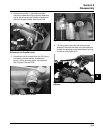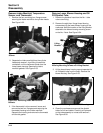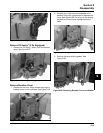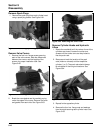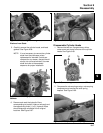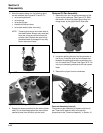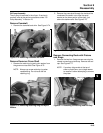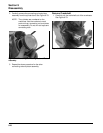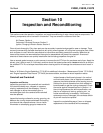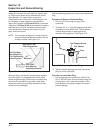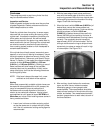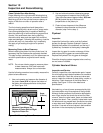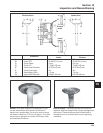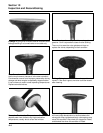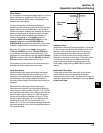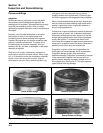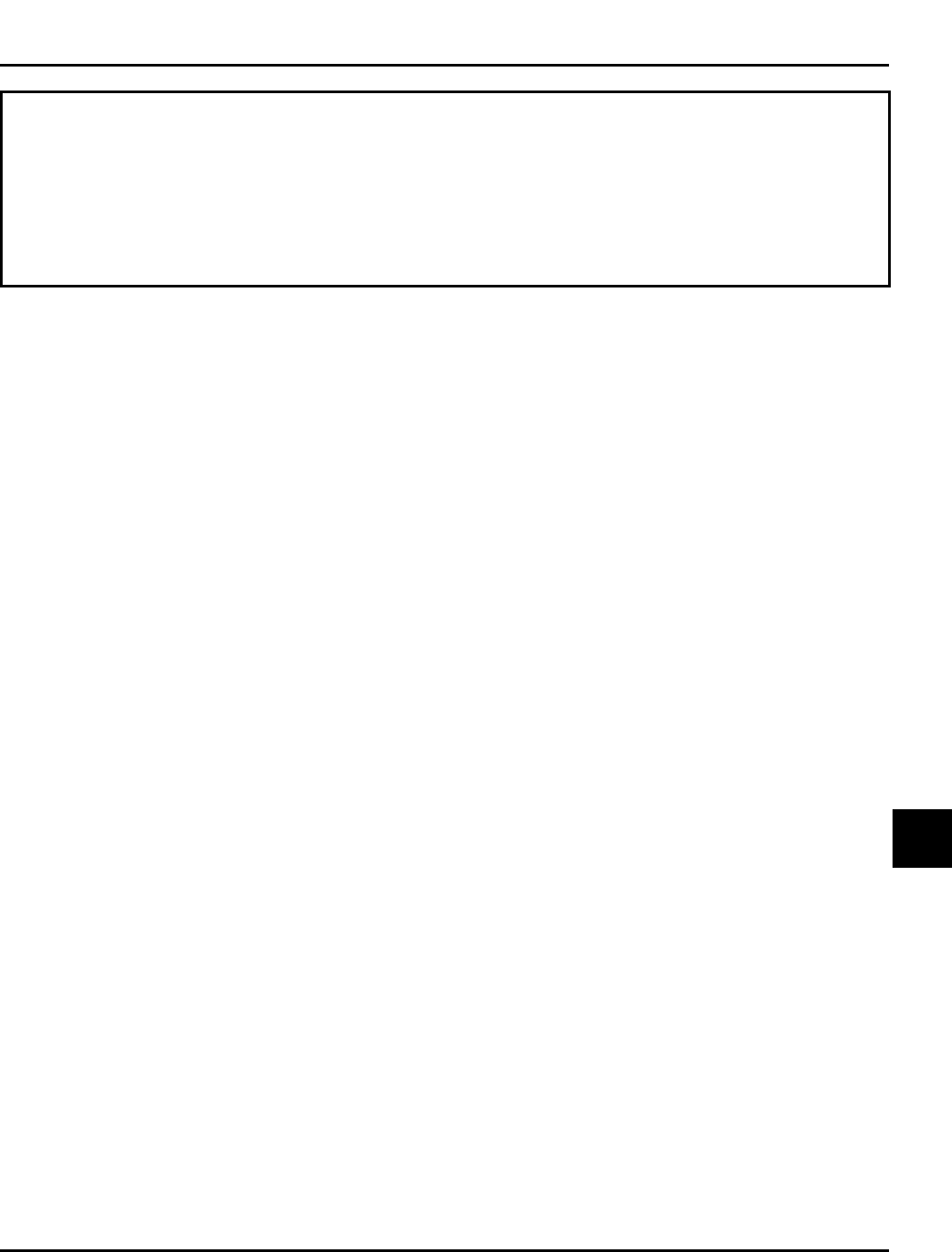
10.1
Section 10
Inspection and Reconditioning
10
Section 10
Inspection and Reconditioning
This section covers the operation, inspection, and repair/reconditioning of major internal engine components. The
following components are not covered in this section. They are covered in sections of their own:
Air Cleaner, Section 4
Carburetor & External Governor, Section 5
Ignition, Charging & Electric Starter, Section 8
Clean all parts thoroughly. Only clean parts can be accurately inspected and gauged for wear or damage. There
are many commercially available cleaners that will quickly remove grease, oil, and grime from engine parts. When
such a cleaner is used, follow the manufacturer’s instructions and safety precautions carefully. Make sure all
traces of the cleaner are removed before the engine is reassembled and placed into operation. Even small
amounts of these cleaners can quickly break down the lubricating properties of engine oil.
Use an aerosol gasket remover or paint remover to remove the old RTV from the crankcase and oil pan. Apply the
solvent, give it time to work (5-10 minutes), and then brush the treated surface with a brass wire brush to remove
the softened RTV. Do not scrape the surfaces when cleaning as this will damage the surfaces and could result in
leaks.
Refer to ‘‘A Guide to Engine Rebuilding’’ (TP-2150) for additional information. ‘‘Measurement Guide’’ (TP-2159-A)
and ‘‘Engine Inspection Data Record’’ (TP-2435) are also available; use these to record inspection results.
LV560, LV625, LV675
Camshaft and Crankshaft
Inspection and Service
Inspect the gear teeth of the camshaft and crankshaft.
If the teeth are badly worn, chipped, or some are
missing, replacement will be necessary. If there is
tooth damage on either the camshaft gear or
crankshaft gear, both the camshaft and crankshaft
must be replaced.
Inspect the bearing surfaces for scoring, grooving, etc.
Measure the running clearance between the bearing
journals and their respective bores. Use an inside
micrometer or telescoping gauge to measure the
inside diameter of both bearing bores in the vertical
and horizontal planes. Use an outside micrometer to
measure the outside diameter of the bearing journals.
Subtract the journal diameters from their respective
bore diameters to get the running clearances. Check
the results against the specifications in Section 1. If
the running clearances are within specification, and
there is no evidence of scoring, grooving, etc., no
further reconditioning is necessary. If the bearing
surfaces are worn or damaged, the crankcase and/or
oil pan will need to be replaced.
Inspect the crankshaft keyways. If worn or chipped,
replacement of the crankshaft will be necessary.
Go Back



